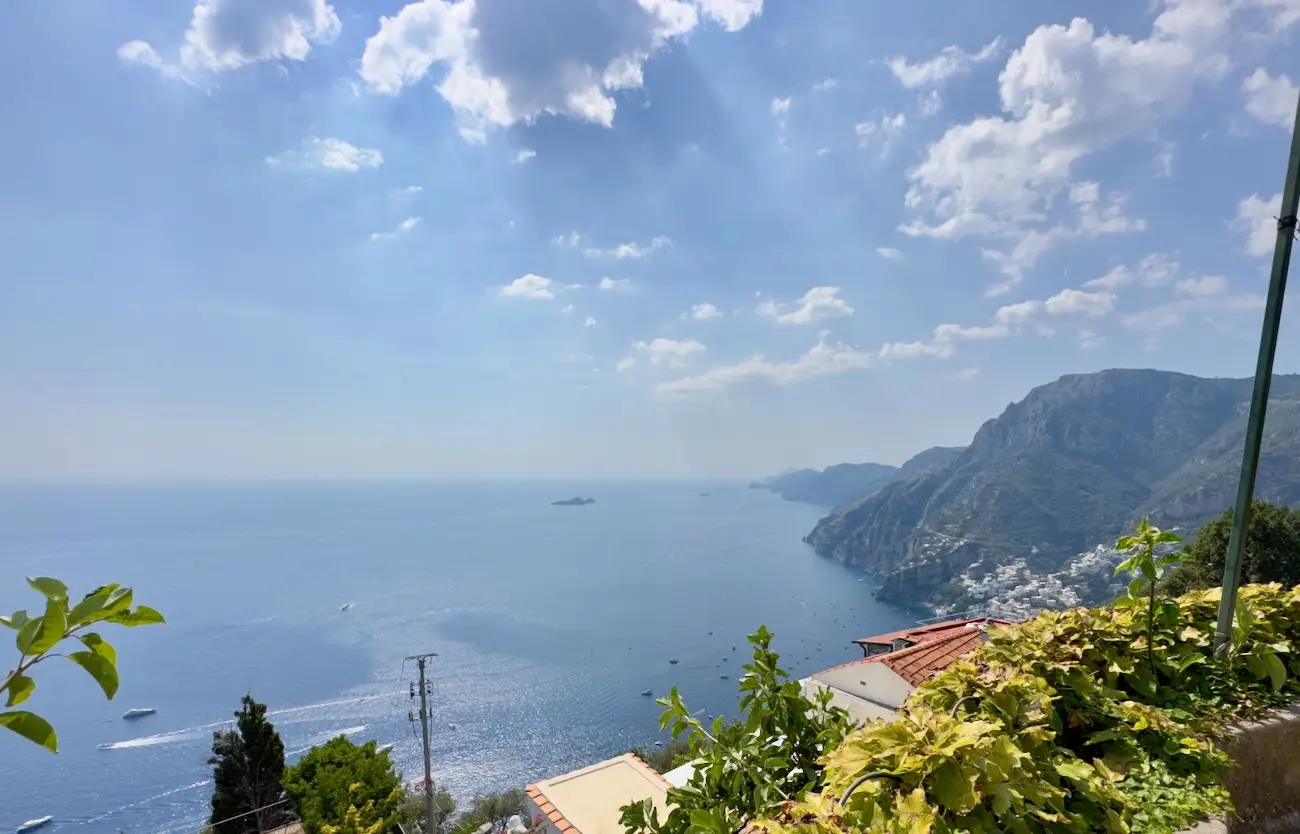
Nocelle to Positano: Descending 1,700 Steps into Amalfi Coast Magic
Most visitors to the Amalfi Coast hear about the hike from Positano up to Nocelle, a steep climb into a quiet hillside village perched high above the sea. It was one of our favorite outings while in Positano, but I caution you, be prepared, it’s a steep climb! However, the reverse journey, the walk from Nocelle to Positano, is one of the most breathtaking and underrated experiences you can have on the coast. Every step both up and down the hillside, I was in awe––consumed by the beauty of the Divina Costiera. It’s not just a hike; it’s a moving postcard that unfolds with every step.
Discovering the Hidden Village of Nocelle on the Amalfi Coast
Nocelle itself is a hidden gem, sitting about 440 meters above sea level. Life feels slower there, surrounded by terraced gardens and cliffside homes, far removed from the busy streets of Positano. When my husband, John, and I climbed the steps from Positano to Nocelle earlier that day, we didn’t realize what we were committing ourselves to and didn’t bring much water or snacks. Thankfully, in Nocelle, we discovered an excellent trattoria, Ristorante Santa Croce, that served some of the best Italian food we experienced during our stay in the Positano region. After lunch, we began our descent from this peaceful village. Even though it was a warm September day, our bellies were full and our feet were ready to move again–down the 1,700 steps that take us from Nocelle to Positano.
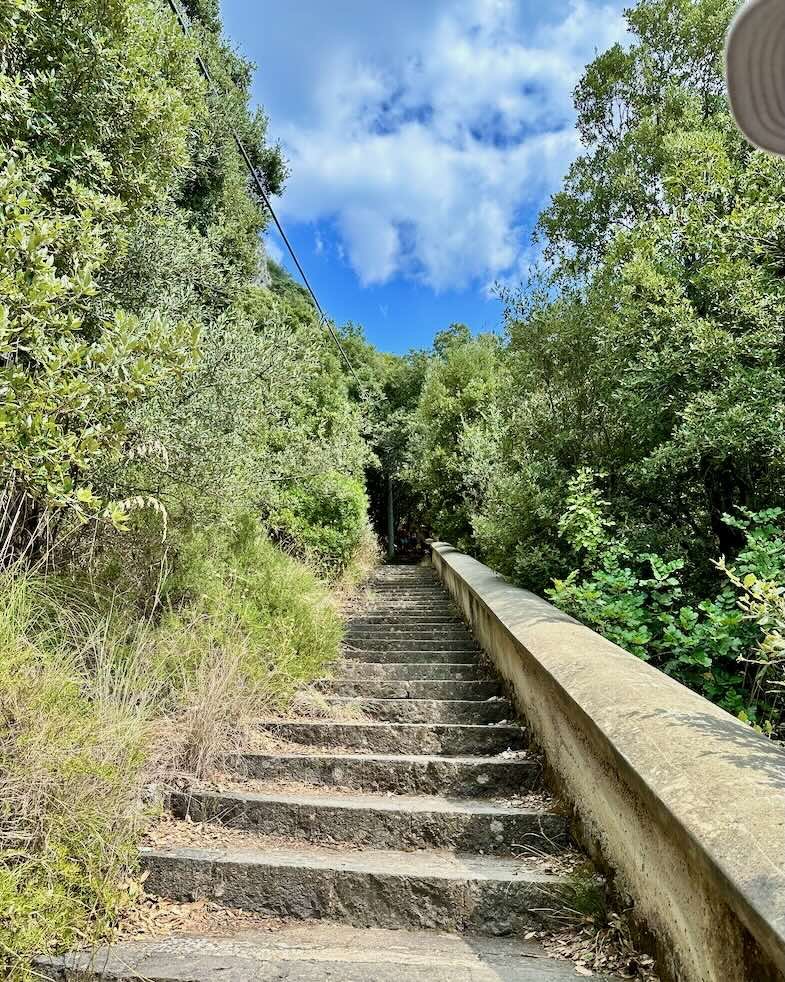

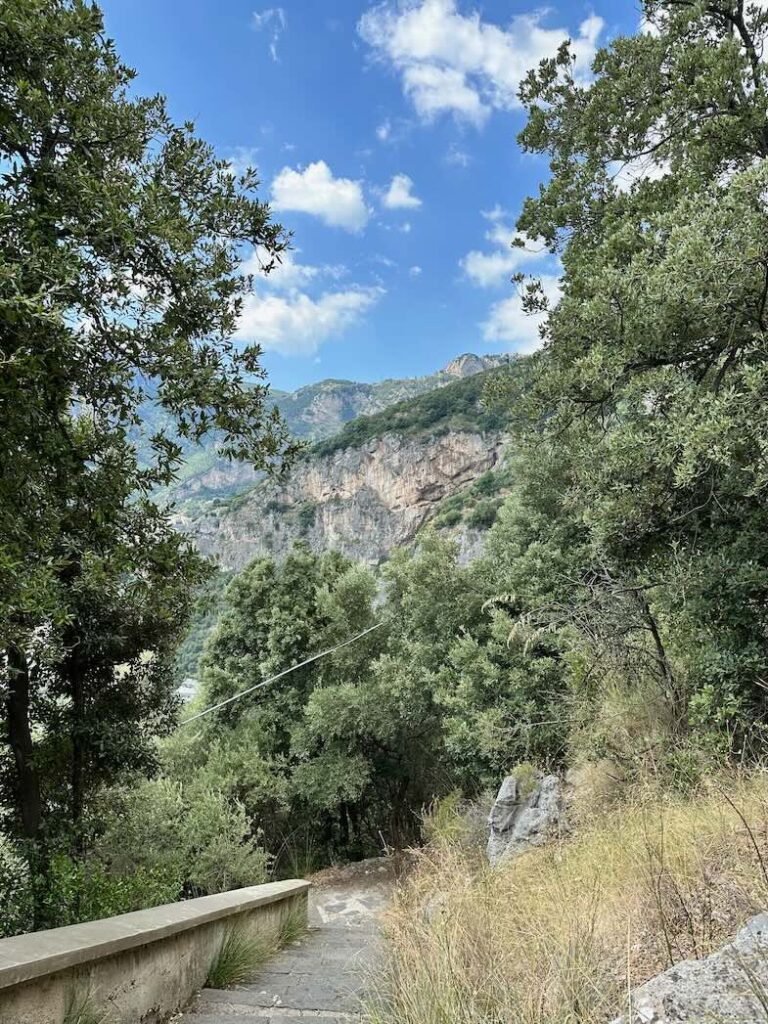
Hiking the Famous Stairs from Nocelle to Positano
The stairway winds through lemon groves and vineyards, past tiny chapels and weathered stone arches that whisper of centuries gone by. With every turn, the Tyrrhenian Sea glitters in the distance, and pastel houses appear gradually as if Positano is slowly rising to greet you. The crunch of footsteps on stone, the shifting views through olive trees, the sight of Positano coming closer with each step. And the cats—whether curled up in the sun, eating, or weaving between stone steps—seemed completely at ease with the hikers.
If you wanted to do only one route, Nocelle to Positano is a good choice! Or, try it in reverse, first as we did, Positano to Nocelle, Italy on foot – a must-visit destination.

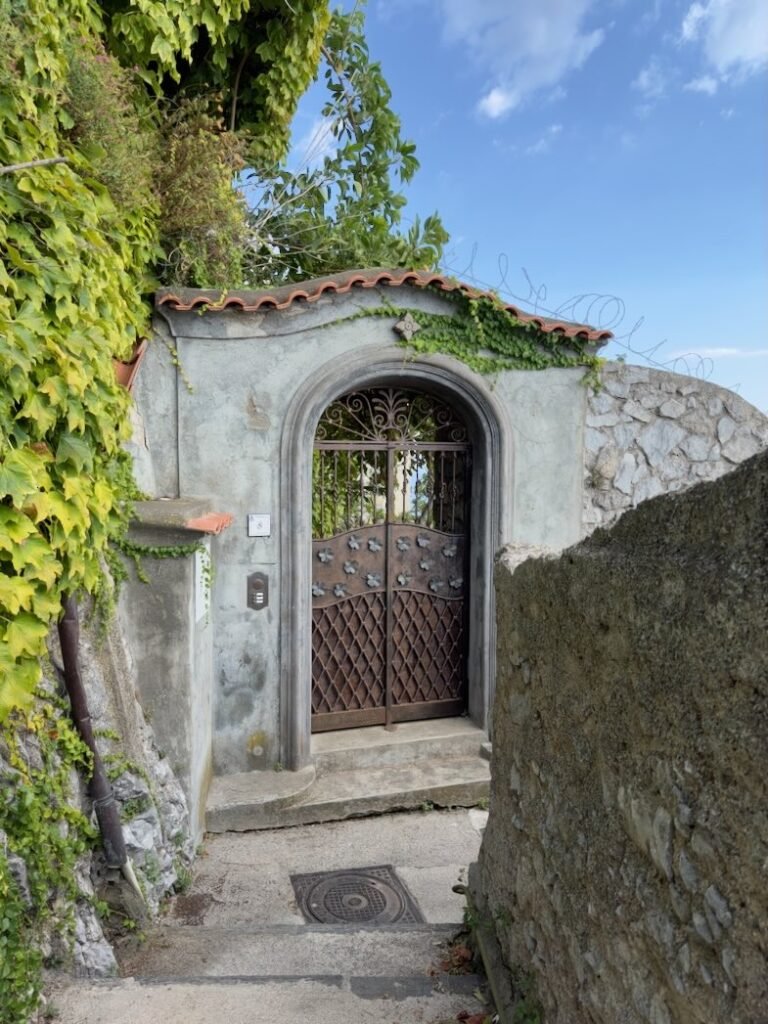
Why the Nocelle to Positano Hike is Unforgettable
What makes the Nocelle to Positano route so unforgettable is its unique perspective. Unlike the demanding uphill climb, this descent allows you to take in the scenery at a gentler pace. The angle of the walk gives you sweeping, cinematic views of Positano that you could never appreciate from below. You’ll also catch glimpses of everyday life, locals carrying groceries or chatting along the path, reminders that this isn’t just a tourist trail but a living artery of the Amalfi Coast. Plus, while it’s still a vigorous walk, you won’t be breathless, so you’ll be able to pay attention to the gorgeous scenery and not your thumping heart beat!
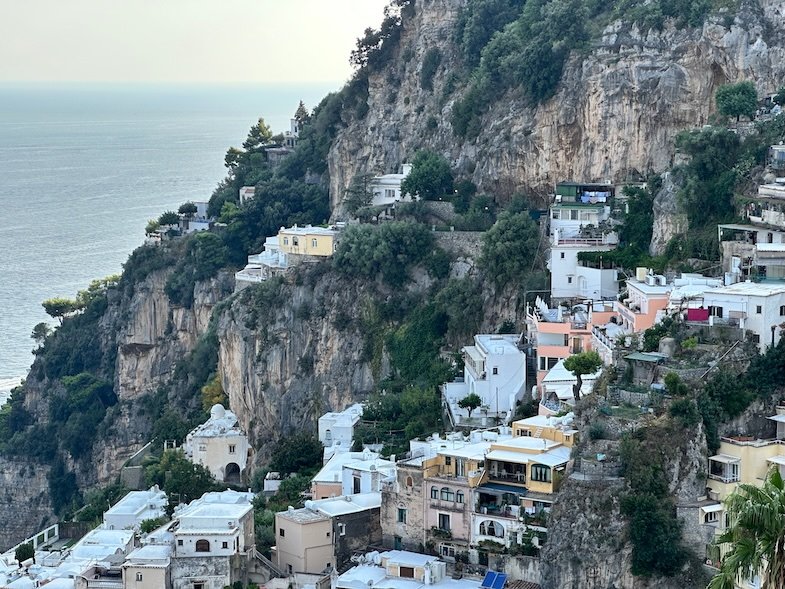
Tips for Hiking the Path of the Gods Connection and Nocelle Stairs
Footwear Matters on Amalfi Coast Trails
The walk is still demanding, so good footwear is a must. I wore Allbirds and Birkenstocks all around Italy, and my feet were happy. The stones are uneven and the distance is long, but the effort is softened by the views and the fact that gravity is on your side.
Best Time of Day for the Nocelle to Positano Walk
Starting early in the morning or later in the afternoon will give you cooler air and golden light, perfect for photos and quiet pauses at the viewpoints.
Pace Yourself and Pause Often
A bottle of water, a few light snacks, and an unhurried pace are all you really need to make the most of this journey.
Arriving in Positano After the Hike
Finally, as the steps flatten and the first sounds of scooters, clinking glasses, and lively conversations drift up, you know you’re entering Positano. The transition is extraordinary: one moment you’re surrounded by silence and sweeping sea views, and the next you’re swept into the colorful heart of one of Italy’s most iconic towns.
A Lesson Learned on Amalfi Coast Buses
Walking from Nocelle to Positano is a must for any Amalfi traveler. It’s the perfect companion to the hike in the opposite direction that we featured on this website, offering a different but equally memorable perspective. More than just a route between two places, it’s an experience that captures the essence of the Amalfi Coast—quiet village life, timeless stone pathways, and the exhilarating arrival into Positano’s seaside splendor.
One word of caution, when John and I reached the bottom, we spotted a bus and assumed that it was the one that offered rides up and down the Amalfi Coast to local beaches and hotels. However, we missed one key factor. The orange-colored Interno buses are the “local” buses, while the SITA (or SITASUD) blue line buses travel to locations much farther away.

We got on the WRONG Bus!
Yep. We were so exhausted, we jumped on the BLUE bus heading for Sorrento (nearly 30 minutes away), and the bus was jam-packed in the late afternoon, so we couldn’t get off!
Most of the people were speaking Italian and looked as though they were heading home for the night. We panicked, and I started yelling, “Stop the bus!” Yeah, it was just like that scene from Under the Tuscan Sun. Except that we weren’t going to buy a Villa in Tuscany, we were just trying to get to our hotel, Le Sirenuse, in Positano. Side note, if you haven’t read that post, check it out next – the hotel is phenomenal.
Ironically, if we had just kept walking after our descent from Nocelle to Positano, we would’ve arrived at our hotel faster than it took for us to finally get off of the wrong bus at the highest point of Positano, called the Chiesa Nuova stop, and then catch a taxi back down the coast to our hotel. If we had remained on the Blue bus, we would’ve been heading to Sorrento via Strada Statale 163 (SS163)–the coastal highway.
Nocelle to Positano: Bus Tips for Travelers
How to Tell Local vs. Regional Buses
When you’re in Positano, the easiest way to pick the right bus without guesswork is to check the route sign on the front and the bus color. If the sign lists nearby stops like Praiano, Montepertuso, Nocelle, or “Interno Positano,” that’s the local orange bus running short loops within Positano and its hamlets. If the destination shows Amalfi, Sorrento, Maiori, or Salerno, you’ve found the regional blue SITA bus, which runs between towns along the coast.
Local buses tend to be smaller (built for Positano’s tight turns) and often use different tickets or vendors than SITA. And since schedules and routes can shift with the season, double-check with your hotel or a driver before you board—especially post-hike when you’re tired and tempted to hop on the first bus that arrives.
Live Fit Magazine Travel Tip: Think “Orange = On the spot (local), Blue = Beyond Positano (regional).” This quick memory cue can save you from an accidental detour toward Sorrento after your Nocelle → Positano descent—learn from our near-miss and confirm the sign before you hop on.
If you love hiking, don’t miss our full guide to walking from Positano up to Nocelle. It’s one of the most scenic trails on the Amalfi Coast and gives you views you won’t see from the road. Read it here



